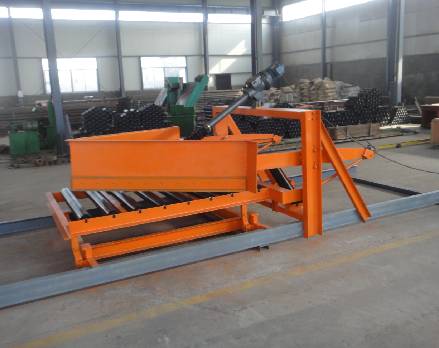 Afrikaans
Afrikaans  Albanian
Albanian  Amharic
Amharic  Arabic
Arabic  Armenian
Armenian  Azerbaijani
Azerbaijani  Basque
Basque  Belarusian
Belarusian  Bengali
Bengali  Bosnian
Bosnian  Bulgarian
Bulgarian  Catalan
Catalan  Cebuano
Cebuano  Corsican
Corsican  Croatian
Croatian  Czech
Czech  Danish
Danish  Dutch
Dutch  English
English  Esperanto
Esperanto  Estonian
Estonian  Finnish
Finnish  French
French  Frisian
Frisian  Galician
Galician  Georgian
Georgian  German
German  Greek
Greek  Gujarati
Gujarati  Haitian Creole
Haitian Creole  hausa
hausa  hawaiian
hawaiian  Hebrew
Hebrew  Hindi
Hindi  Miao
Miao  Hungarian
Hungarian  Icelandic
Icelandic  igbo
igbo  Indonesian
Indonesian  irish
irish  Italian
Italian  Japanese
Japanese  Javanese
Javanese  Kannada
Kannada  kazakh
kazakh  Khmer
Khmer  Rwandese
Rwandese  Korean
Korean  Kurdish
Kurdish  Kyrgyz
Kyrgyz  Lao
Lao  Latin
Latin  Latvian
Latvian  Lithuanian
Lithuanian  Luxembourgish
Luxembourgish  Macedonian
Macedonian  Malgashi
Malgashi  Malay
Malay  Malayalam
Malayalam  Maltese
Maltese  Maori
Maori  Marathi
Marathi  Mongolian
Mongolian  Myanmar
Myanmar  Nepali
Nepali  Norwegian
Norwegian  Norwegian
Norwegian  Occitan
Occitan  Pashto
Pashto  Persian
Persian  Polish
Polish  Portuguese
Portuguese  Punjabi
Punjabi  Romanian
Romanian  Russian
Russian  Samoan
Samoan  Scottish Gaelic
Scottish Gaelic  Serbian
Serbian  Sesotho
Sesotho  Shona
Shona  Sindhi
Sindhi  Sinhala
Sinhala  Slovak
Slovak  Slovenian
Slovenian  Somali
Somali  Spanish
Spanish  Sundanese
Sundanese  Swahili
Swahili  Swedish
Swedish  Tagalog
Tagalog  Tajik
Tajik  Tamil
Tamil  Tatar
Tatar  Telugu
Telugu  Thai
Thai  Turkish
Turkish  Turkmen
Turkmen  Ukrainian
Ukrainian  Urdu
Urdu  Uighur
Uighur  Uzbek
Uzbek  Vietnamese
Vietnamese  Welsh
Welsh  Bantu
Bantu  Yiddish
Yiddish  Yoruba
Yoruba  Zulu
Zulu Understanding the Functionality and Benefits of Troughing Rolls in Material Handling Systems
Understanding Troughing Rolls Key Components of Material Handling Systems
Troughing rolls play a crucial role in the design and functionality of conveyor systems, particularly in industries that involve the transportation of bulk materials. These rolls are engineered to support conveyor belts in a way that allows for the efficient and safe movement of various types of cargo, including sand, gravel, coal, and agricultural products. In this article, we will explore the significance of troughing rolls, their construction and operation, and their application in material handling systems.
What are Troughing Rolls?
Troughing rolls are cylindrical rollers that are set at an angle to create a trough shape. This design is fundamental to the efficient operation of conveyor belts as it allows the belt to carry materials in a controlled manner. The angle of the rolls can vary, typically ranging between 20 to 45 degrees, depending on the requirements of the specific application. The trough angle effectively helps in confining the materials to the center of the belt, minimizing spillage and maximizing load stability.
Construction and Types of Troughing Rolls
Troughing rolls can be constructed from various materials, including steel and rubber, to suit different industry requirements. The choice of material often depends on factors such as the weight and abrasiveness of the materials being transported. The rolls are usually mounted on a frame that can be adjusted for height and angle, allowing for flexibility in the design of the conveyor system.
There are primarily three types of troughing rolls based on their configuration
1. Three-Roll Configuration This is the most common setup, featuring three rolls arranged to form a V-shape. This configuration is effective in providing optimal support for the conveyor belt, allowing it to maintain its shape under load.
troughing rolls

2. Five-Roll Configuration Used in scenarios where a more stable belt structure is required, this setup offers additional support and reduces belt sagging, which can be beneficial for longer conveyor systems.
3. Specialized Configurations In certain applications, customized troughing rolls may be designed to meet specific operational needs, such as accommodating challenging material sizes or shapes.
Importance of Troughing Rolls in Conveyor Systems
Troughing rolls are vital for several reasons. Firstly, they enhance the efficiency of material transport by increasing load capacity while reducing the risk of spillage. This capability translates into lower operational costs and improved productivity. Secondly, the design of troughing rolls minimizes belt wear, prolonging the lifespan of the conveyor and reducing maintenance expenses.
Additionally, troughing rolls improve safety in the workplace by reducing the likelihood of material spillage, which can lead to accidents and hazards. By keeping materials contained, these rolls aid in maintaining a clean working environment and contribute to an overall safer operation.
Conclusion
In conclusion, troughing rolls are indispensable components of modern material handling systems, offering enhanced efficiency, safety, and reliability in bulk material transport. Their design and configuration significantly impact the performance of conveyor belts, making them a critical consideration in the design of industrial systems. As industries continue to evolve, the role of troughing rolls will undoubtedly remain significant, facilitating efficient and effective material handling in an ever-demanding operational landscape. Understanding the importance and functionality of these rolls is essential for anyone involved in material handling, ensuring that systems are optimized for peak performance.
-
Revolutionizing Conveyor Reliability with Advanced Rubber Lagging PulleysNewsJul.22,2025
-
Powering Precision and Durability with Expert Manufacturers of Conveyor ComponentsNewsJul.22,2025
-
Optimizing Conveyor Systems with Advanced Conveyor AccessoriesNewsJul.22,2025
-
Maximize Conveyor Efficiency with Quality Conveyor Idler PulleysNewsJul.22,2025
-
Future-Proof Your Conveyor System with High-Performance Polyurethane RollerNewsJul.22,2025
-
Driving Efficiency Forward with Quality Idlers and RollersNewsJul.22,2025





























